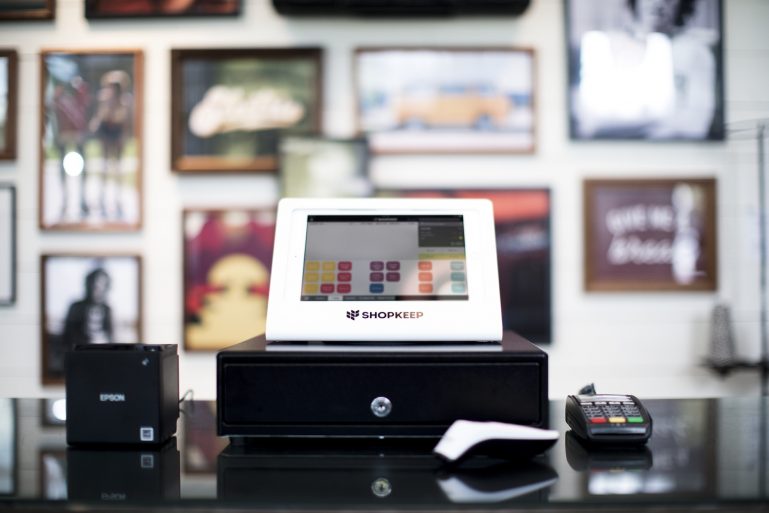
Who Can Benefit From Retail Management Software
Retail management software isn’t a new invention, but you might be wondering if it’s worth your time. Let’s look at who can benefit from retail management software.
Software tools and apps play a much larger role in the success of small businesses than they did even five years ago. Experienced entrepreneurs know the advantages that technology gives to them. There’s no better way to streamline operations, grow revenue, and manage day-to-day business.
But if you’re a first-time store owner or a little reluctant to trust technology, retail management software and its benefits might be foreign to you. But that doesn’t have to be the case.
What is Retail Management Software?
It should come as no surprise that retail management software is exactly what it sounds like: software for managing the operations and business processes of a retail store. In fact, you might have even heard of it before, just under another name. It’s common to call retail management software point of sale (POS) software or a POS system.
This popular category of software features dozens of vendors, and there’s often significant overlap in terms of capabilities. Of course, feature lists will vary between vendors, but there’s a common set of tools that almost all offer. Looking at these tools is the best way to understand the benefits you can expect and decide whether or not a POS or a retail management solution is right for your business.
Key Benefits of Retail Management Software
There are several major categories of tools that most retail management software vendors will offer. Let’s take a look at each of them to help you better understand the value they can drive for your business.
A More Efficient Checkout with Register Tools
This is what most merchants will think of first when they hear “point of sale.” It’s the software and hardware that function as a replacement for a traditional cash register. In the past, a POS register would run on either a desktop computer, a large proprietary touchscreen device or some combination of the two. Today’s modern POS systems have evolved significantly to now run on iPad and Android tablets.
The main benefits you can expect from using a modern POS register versus a traditional electronic register, or even a traditional POS system, are faster transactions, greater accuracy, and better overall ease of use.
A modern POS can deliver these benefits because they have colorful and easy to use interfaces that simplify the transaction process for both the cashier and the customer. Usually, there are multiple ways to add an item to an order (on-screen buttons, searching, barcode scanner) versus manually looking up the price or item code and typing it in. Modern retail management software is also compatible with the latest and greatest payments hardware, which ensures your customers can pay with their preferred method.
A Streamlined Inventory Management Process with Inventory Control Tools
Any retail management software or point of sale software worth its salt is going to feature robust inventory management tools. As you might guess, these tools help you track, organize, and generally manage your inventory. What does that mean in practice?
Whether you sell a few dozen products or a few thousand, staying on top of your inventory (quantity, performance, cost, etc.) is critical to keeping your cash flow in-check and your business on track. Inventory management tools help simplify this process by:
- Automatically updating quantities when items are sold.
- Alerting you to reorder items when you’re running low on stock.
- Tracking costs and profit margins on a per item basis so you can stay profitable.
- Keeping you informed with real-time inventory data at the click of a button.
Not only do these tools benefit your business by helping you complete essential inventory management tasks, but they also help you complete them far more efficiently. The alternative to built-in inventory management tools is trying to manage inventory through some combination of spreadsheets, pen and paper, or some other manual process. Instead of spending hours on inventory management each week, what about minutes? Think about what you could do with all of that extra time.
SEE ALSO: Why Your POS System is the Best Inventory Management App
More Informed Business Decisions with Reporting and Analytics
Whether they’re called reporting or analytics depends on the specific platform, but regardless of the name, these tools are a killer POS feature. Reporting tools basically take your business data and convert it into a human-readable format. Normally this means things like charts or tables that summarize critical business info. With these reports, you’re able to better understand how your business is functioning. With these insights, you’re equipped to make informed decisions that guide your business down a path to success.
Here are just a few examples of insights that these reports can give to you:
- Identify your top selling products, product categories, or departments.
- Identify your busiest and slowest times of the day, week, month, year, or longer.
- Track the number of new customers or email subscribers that you add to your database within a given timeframe.
- Measure the sales performance of your sales employees so that you can identify top performers, as well as those that need additional coaching.
The list can go on and on. It’s really only limited by some combination of your imagination and the capabilities of a specific platform’s reporting tools. Because reporting and analytics can have such a dramatic impact on your business performance, we recommend taking the time to fully understand a POS system’s capabilities in this area if you’re actively comparing solutions against one another.
SEE ALSO: Everything You Should Know About In-Store Retail Analytics
A More Organized Workforce with Employee Management Tools
At one point or another, you’re likely going to want to hire a team of employees to help you run your retail shop. There’s a lot that goes into the hiring, training, and day-to-day management of employees, especially if they’re junior. Fortunately, most point of sales systems will help you stay on top of your employees so that you can stay organized and manage them more effectively.
For example:
- Automatically track employee hours with a built-in time clock.
- Use this more accurate record-keeping to complete payroll faster and with more confidence.
- Maintain security by setting permission levels to give junior and experienced employees the appropriate degree of system access.
- Leverage your reporting tools to provide coaching and additional training to the employees that need it most.

Grow Revenue and Repeat Business with Customer Marketing Tools
Growing your retail business into a long-term, sustainable operation requires an effective marketing strategy. To be as effective as possible, this approach needs to account for acquiring new customers as well as maximizing the value you generate from existing ones.
In today’s age of Amazon, you need to fight to separate yourself from the chain shops and big-box retailers by offering a higher level of service and a more personalized customer experience. Your POS or retail management software can be a powerful tool to aid you in this. However, the software can only do so much. You’ll need to support your tools with the right internal processes like customer service training.
With that caveat out of the way, let’s look at some of the marketing benefits you can expect from a POS or retail management software:
- Power your newsletter and email marketing with an ever-growing email list with easy email collection tools.
- Increase brand awareness and drive traffic to your social media accounts on various platforms with customizable email receipts.
- Encourage repeat shopping with a rewards-based customer loyalty program.
- Drive new foot traffic with a tool like ShopKeep Spotlight, which improves your local SEO and helps you manage your customer reviews.
- Help you manage customer relationships with a built-in database and customer relationship management (CRM) tools.
Leverage Third-Party Integrations for More Efficiency and Growth
As we mentioned earlier in the article, it’s likely that you’ll use your POS software alongside other tools. Ideally, you’ll plan out your software ecosystem so that everything integrates with one another. The benefit of orchestrating your tools in this way is that they can share data between one another. Not only is this more efficient than manually exporting and importing data from one tool into another, but it can also unlock additional functionality.
For example:
- If your accounting software like QuickBooks integrates with your POS, then your daily sales data is automatically sent from your POS to QuickBooks, eliminating errors and improving your efficiency.
- If your email marketing platform like MailChimp integrates with your POS, then the email addresses you collect are automatically passed into that tool where you can use the for email marketing campaigns.
- If your ecommerce platform like BigCommerce integrates with your POS, then whenever you sell something online, your in-store inventory counts will update, and vice versa.
Who Benefits Most From Retail Management Software?
As we’ve demonstrated throughout this piece, there are dozens of different benefits you can expect from adopting retail management software, aka a POS system. Because those benefits are so numerous and wide-ranging everyone from a recently hired cashier to a seasoned entrepreneur and even an outside consultant will benefit.
Now, all that’s left for you to do is find a system that offers the right compromise between features and price, and start selling.
Want to try ShopKeep for yourself?
Just answer a few easy questions.
Need help finding the right point of sale?
Just complete the form. We’ll call you right back to explain how ShopKeep can work for you.
Hit the ground running.Sprinting, in fact!
Read our free, comprehensive guide, Small Business 101, to learn all you need to know about starting a thriving business.

